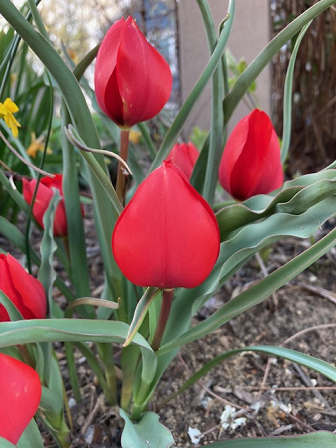An inflorescence is the botanical word to describe a flower head or group of flowers. When most people think of flowers, they think of the most basic type of inflorescence, the solitary flower. In a solitary flower, the peduncle (flower stalk that connects to the main plant stem) and pedicel (flower stalk that connects flowers to the peduncle) are the same thing. Some examples of a solitary flower would be the tulip, poppy, or rose.



However, there are all kinds of inflorescences! There are also plenty of inflorescences that may appear to be solitary but are actually other types because of what we consider to be a “flower”. Read on to find out what some types of inflorescences are.
| Inflorescence | Definition | Examples | |
 | Solitary | flowers arise from a single combined pedicle and peduncle | rose, poppy, tulip |
 | Raceme | alternating pedicels on a peduncle | foxglove, grapes |
 | Panicle | a compound or branched raceme, pedicels arise from a peduncle which arises from another peduncle | hydrangea, lilac |
 | Spike | a raceme with sessile flowers (no pedicels) | cattail, mullein |
 | Corymb | lower pedicels are longer than upper, forming a flat level top of flowers (flowers mature outside-in) | viburnum, jasmine |
 | Umbel | all pedicels arise from 1 point and are the same length, forming an umbrella-shaped top | onions |
 | Compound Umbel | peduncle branches to form equal rays of umbels | carrot, parsley |
 | Head (Capitulum) | short dense simple inflorescence of sessile flowers attached to 1 receptacle | aster, daisy |
 | Cyme | new flowers grow from the bottom/side, with the oldest flowers at the top/middle | geranium |
 | Verticel | axillary whorl of flowers radiating, flowers mature from bottom to top | mints |
 | Spadix | fleshy spike where flowers are embedded, often surrounded by a leaf called a spathe | arums |
 | Catkins / Aments | spike-like or raceme-like, apetalous staminate or pistillate flowers (always imperfect), sometimes look like cones | willow |
If you enjoyed learning about inflorescence types, check out this post about exploring the basic parts of flowers themselves.


Comments
2 responses to “Botany Terminology: All About Inflorescences”
[…] is a member of the mint family Lamiaceae. We learned in our recent blog about inflorescence types that the mint family has what is called a “verticel” inflorescence. The verticel has an […]
[…] As the image above shows, the sunflower is an example of an inflorescence, specifically a capitulum (or head). A capitulum is a short dense simple inflorescence of sessile flowers attached to a single receptacle. We learned about different inflorescence types earlier in this blog. […]